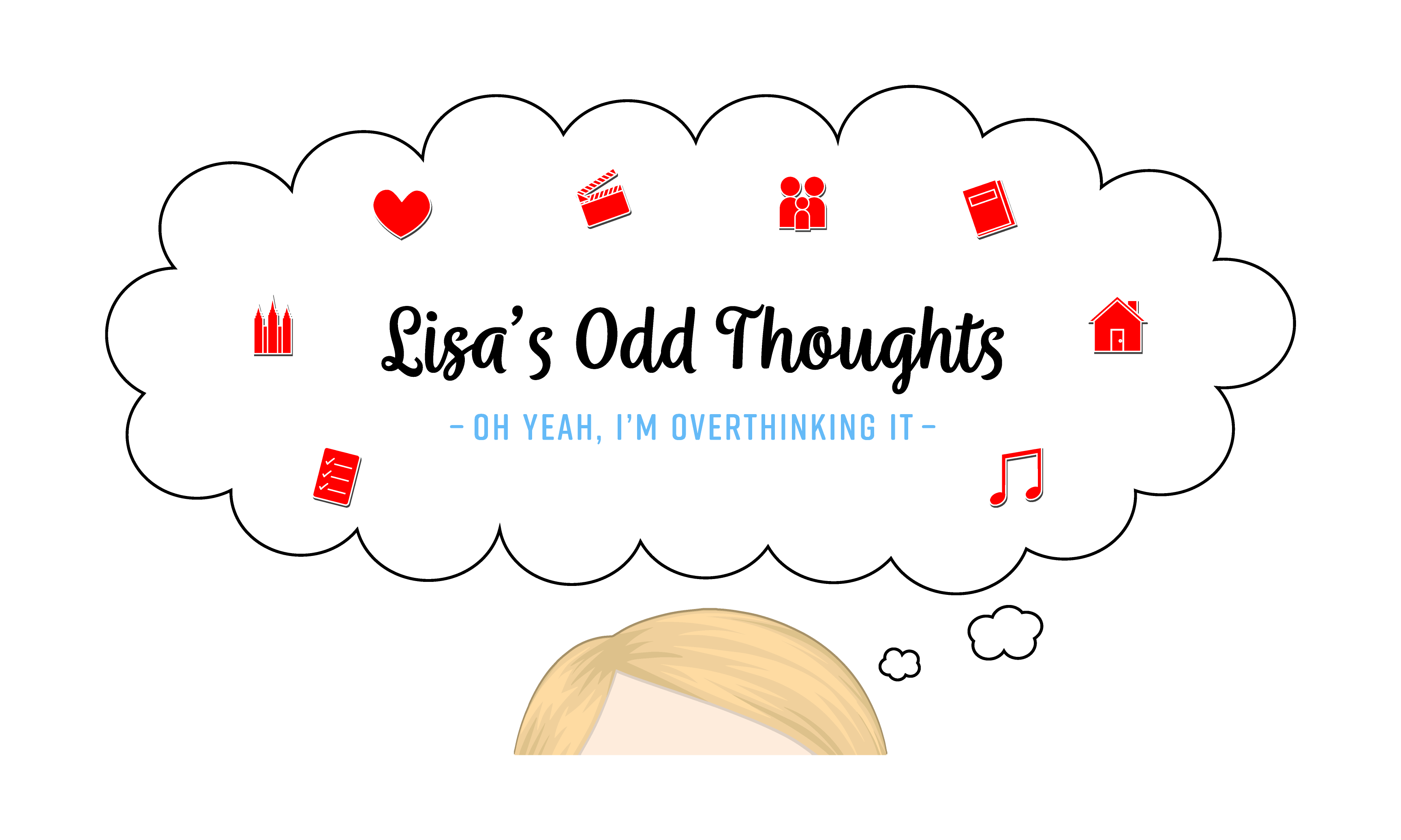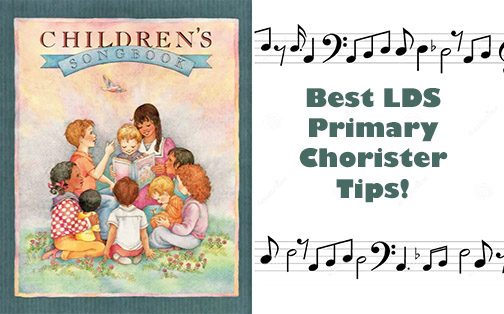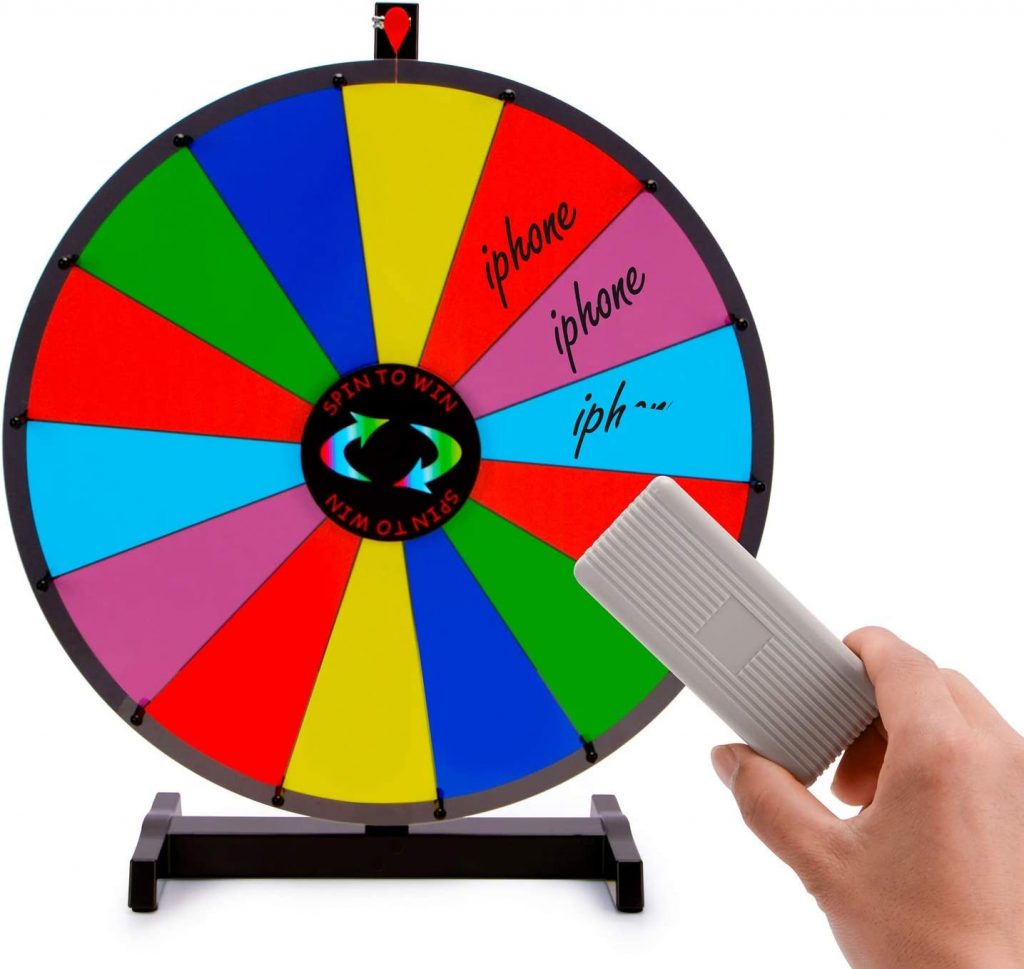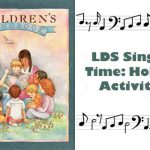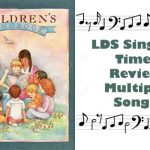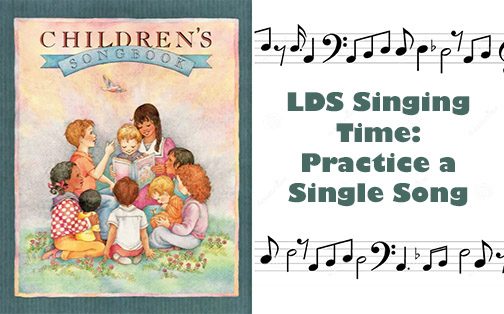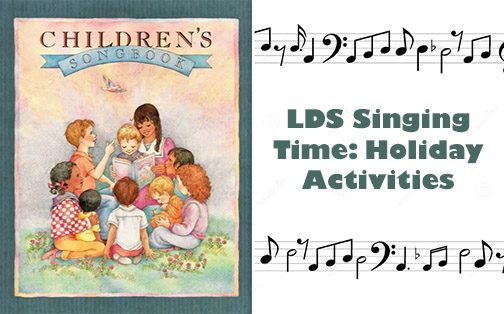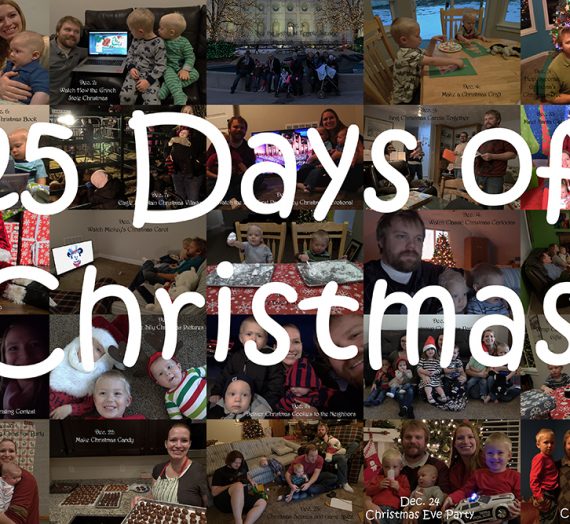I am happy to be a member of the Church of Jesus Christ of Latter-Day Saints. One program that our church offers is Primary, which is Sunday School for children ages 3-11 years old. A big part of Primary is Singing Time where children learn and sing songs that teach them about Jesus, and where they get their wiggles out and have a lot of fun!
I served as the Primary Chorister (which meant I was in charge of Singing Time every Sunday during Primary) for almost three years. I so enjoyed that calling and I learned a lot.
Over those years I had some amazing singing activities that went super great and everyone loved. Other times, I attempted some activities that totally flopped. So now you get to benefit from my successes and mistakes. I’m sharing all of my Singing Time wisdom here for the world to benefit from.
I’ve broken this down into a four part series. This is Part 1: Best Tips for Primary Choristers. Check out the other articles in this series by clicking the links below:
Part 2: Sing Multiple Different Songs
Part 3: Learn and Practice a Single Song
Before you even plan a single Singing Time activity, I have six easy tips to keep in mind that will help you be the very best Primary Chorister you can be. So read on and get ready for Primary Singing Time!
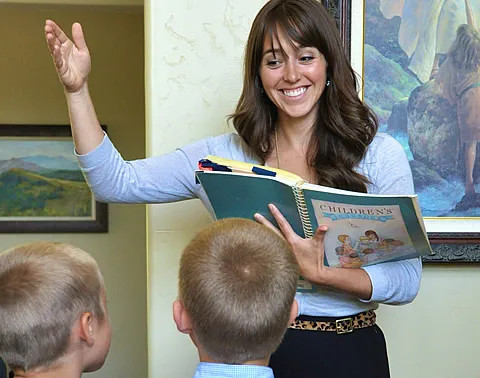
Tip #1: It Doesn’t Have to be Elaborate or Complicated; Easy and Simple is the Way to Go!
When I was first called as the Chorister, the very first thing I did was browse the internet for ideas and suggestions. Bad idea! (Unless you’re browsing here, of course, because I’m a fountain of good ideas; you’re welcome.)
Suddenly my initial excitement turned to feeling horribly inadequate and overwhelmed; the internet is bursting with HUGE Singing Time ideas that require LOTS of prep and LOTS of cleanup.
I was also pregnant with my Baby #1 at the time and I certainly didn’t have the energy or time to paint murals, sew costumes, or create elaborate decorations (all of which were real suggestions I found on Pinterest; seriously, who is painting a freaking mural for a 20-minute Primary activity!?).
Throughout my years as Chorister, I had both my Baby #1 and my Baby #2, so for a bulk of my Primary Chorister calling I was either pregnant or caring for a newborn. And so, believe it or not, my time and energy was fairly limited. I needed Singing Time activities that were fun for kids but also do-able for a big ol’ pregnant lady.
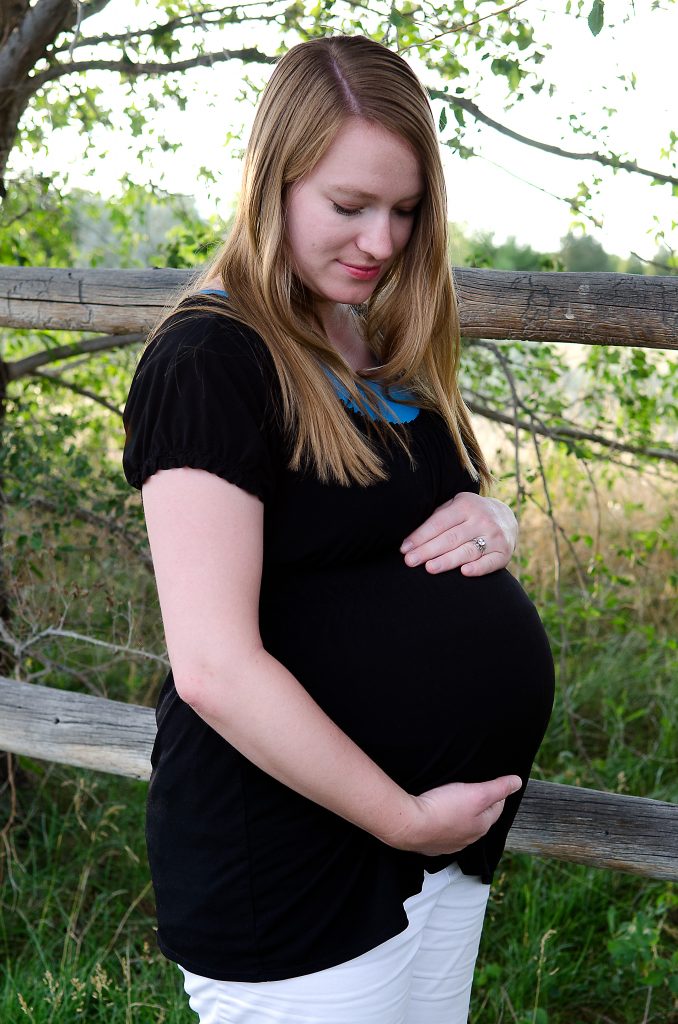
I needed activities that were portable, easy to prep, easy to clean up, simple, simple, and did I mention simple?
And here’s the kicker: kids need easy and simple activities too.
Singing Time has two main purposes: to fill the kids’ church time while their parents go to Adult Sunday School (you might think this sounds harsh, but I’m just being honest here), and to introduce Gospel principles through music.
Basically your Singing Time activities need to help the kids learn about Jesus Christ. If everyone is distracted by your elaborate and complicated decorations or whatever else, then their focus is on that rather than on our Savior. Focus on teaching about Jesus Christ, even in fun, wiggly, and entertaining ways.
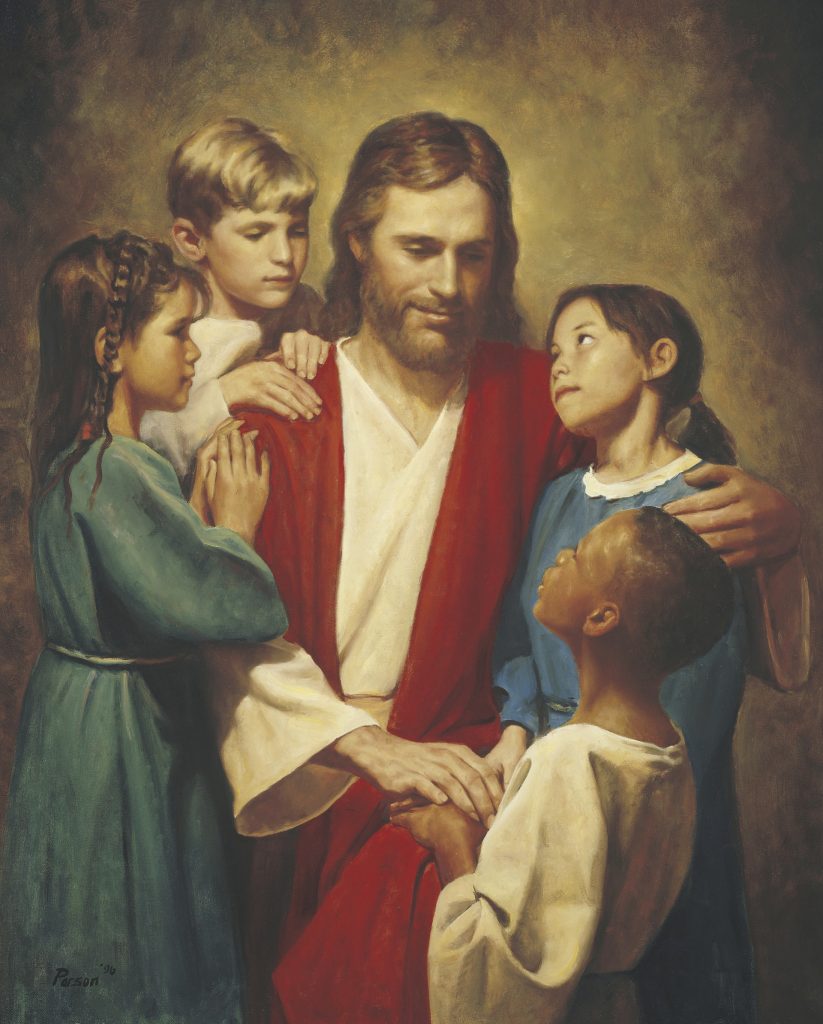
With that simplicity in mind, all of activity ideas (see Parts 2-4 of this blog series) are designed to be easy, cheap, reusable, adaptable, and fun! And did I mention simple?
Tip #2: Be Fun!
Notice that I didn’t say, “have fun.” Rather, you need to be fun! Just because we’re learning about Jesus Christ doesn’t mean that things need to be somber, silent, and boring.
But how?
Be dramatic. Ham it up. Be silly and animated. Laugh. Act excited.
Seriously. You might feel like you’re being over-the-top goofy, but for little kids they just drink that ridiculousness up and they love it.
The more drama, the more fun. You didn’t bring a game, you brought The World’s Greatest Game! You didn’t put puzzle pieces around the room for kids to find, you’ve Set a Mystery for The Primary Detectives to Solve!
When the games are a close tie, play it up as the most intense game in the world. When the activity says to sing quietly, do an exaggerated stage whisper. When it’s time to dance to a wiggle song or do silly actions, you give those moves your all. When you do something silly or make a corny joke, laugh at yourself like you’re a freaking standup comedian.
Be animated. Be into it. Make Singing Time the funnest freaking part of church by being freaking fun yourself. The kids will love it and they’ll love you.
Now yes, I indeed got some stage fright every now and then, especially when I had to be extra silly or dramatic. Being animated and goofy for little children is one thing, but it’s a totally different thing to look into the serious faces of all the adult teachers while you’re huffing and puffing your pregnant self across the room like a complete fool trying to keep up with the crazy dance moves someone chose for “Do As I’m Doing.”
Been there, done that.
But I try to remind myself that those adults are way happier that it’s me making a fool of myself instead of them. They’re more than happy to sit back and watch me dance away.
Or, more likely, they’re also just as entertained as the kids. And if they’re not, then they sound like grumpy sticks in the mud. Who asked for their dumb opinion anyway? You’re there for the kids, not the adults.
Adults are lame anyway.
Tip #3: Don’t Reinvent the Wheel
Most of the following activities are designed to be reusable and adaptable. Likewise, if you find an activity or game that worked really well, by all means do it again later! Then add a slight variation and do it again! Space your repeated activities about three-ish months apart and no one will think twice about doing a repeat activity.
There is no law that says you have to have an entirely new, never-before-seen activity every sing week. Especially if you took extra time one week to make something (such as bean bags for a bean-bag-toss game, flip signs, or holiday-themed cutouts), enjoy not putting in that much work a second time and reuse those things! It’s also okay to play the Hot/Cold Game every couple months, but mix it up by hiding a different object.
Pro-Tip: Don’t write permanent songs on objects or papers, but use Post-Its with your songs written there and stick those to your objects, numbers, signs, etc. so you can reuse them with different Post-Its for future activities.
I kept lined paper in the back of my Primary binder to jot down each week’s activity, including the date, Then it was easy to look back and reuse old activities without overdoing them too often and spacing them out appropriately.
Tip #4: Learn from Your Mistakes
Some activities will be a big flop. Sometimes you’ll try something and realize too late in the very midst of things that it was too complicated or too easy. Sometimes things just won’t work out and you’ll walk out of Primary feeling embarrassed and dumb. It will happen.
That’s okay. Don’t get bogged down by these flop days; everyone has them, no matter your calling in church. But you don’t need to beat yourself up because your activity didn’t go over well.
There are some bad activities you can fix. I tried a few various phrase-unscramble activities before I perfected it. The very first time I tried it, it was a disaster. The kids didn’t know the song well enough to unscramble the words from it and so they struggled the entire time. Finally Singing Time ended with us not actually singing the song a single time because we were too wrapped up in this too-difficult activity. I left that day feeling mega stupid.
But that doesn’t mean that a phrase-unscramble activity is a bad idea–I just executed it poorly. Keep trying, make it better, and learn from your mistakes.
Tip #5: Gather Basic Supplies to Keep on Hand
The following is a list of supplies that you’ll need to keep on hand:
A storage box to hold all your Primary things. I used a basic hanging-file folder box that lived in my closet. It had hanging files for song flipcharts, holiday-themed pictures, or commonly-used items. It also had room for all my bigger supplies like toys and bean bags. Then every week I just grabbed what I needed and popped it into my church bag. It was labeled, organized, and easy to use.
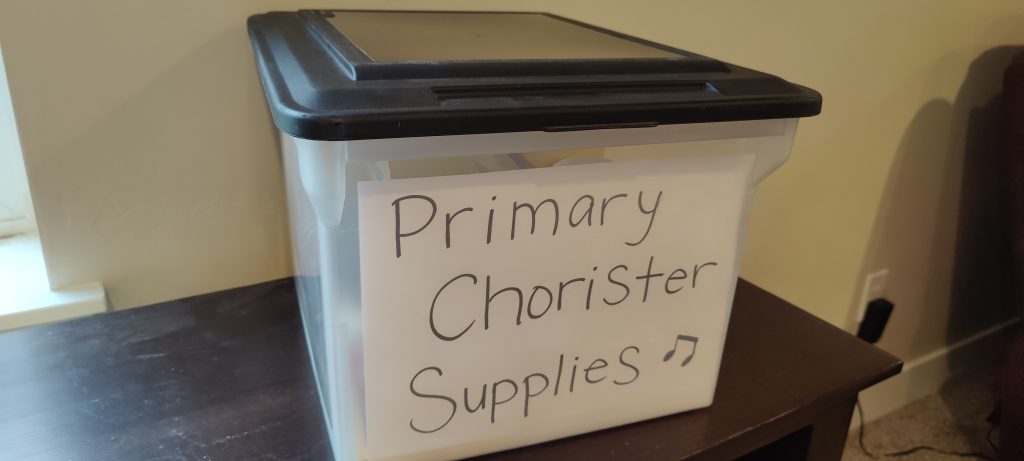
Cardstock paper for writing words on or making/printing flipcharts. Cardstock is sturdier than regular paper, which is why I always choose cardstock.
Sharpies and/or colored markers for writing signs.
Masking tape for taping signs, pictures, papers, etc. around the room or on the board.
Post-Its.
Holiday-themed objects, pictures, or paper cutouts. Use hearts for Valentines Day, Easter Eggs for Easter, pumpkin or leaf cutouts for the autumn time, etc.
Pocket-sized pictures of Jesus Christ. These are great for hiding around the room for the Hot/Cold game, or putting Post-Its onto the back of.

Book of Mormon characters and Missionary figurine toys. My husband had this collection of BoM characters and missionaries that his mom bought him from Deseret Book way back in the day, and I long-term borrowed them to use for Primary. These are AWESOME for the Hot/Cold game, or for taping notes to the bottom with a song assignment. The kids loved these little toys and they were always a big hit every time I brought them to Primary.
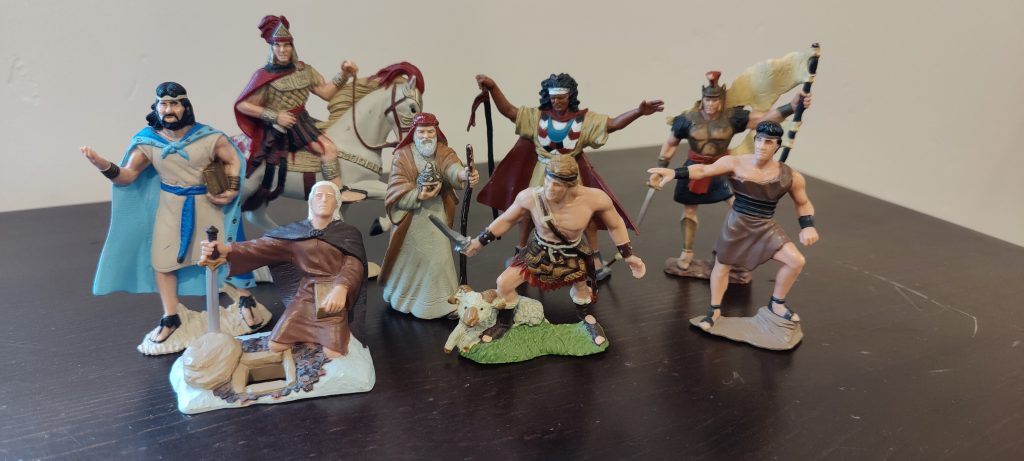
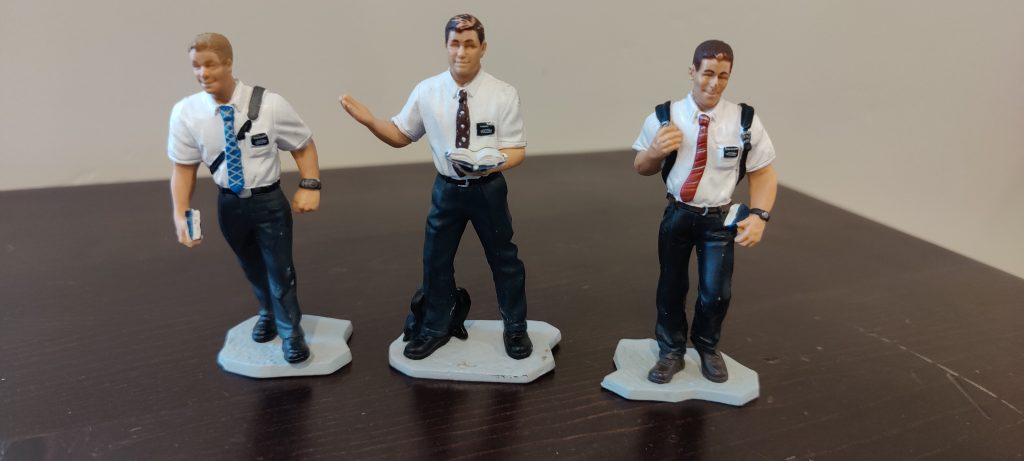
Folders for organizing song flipcharts.
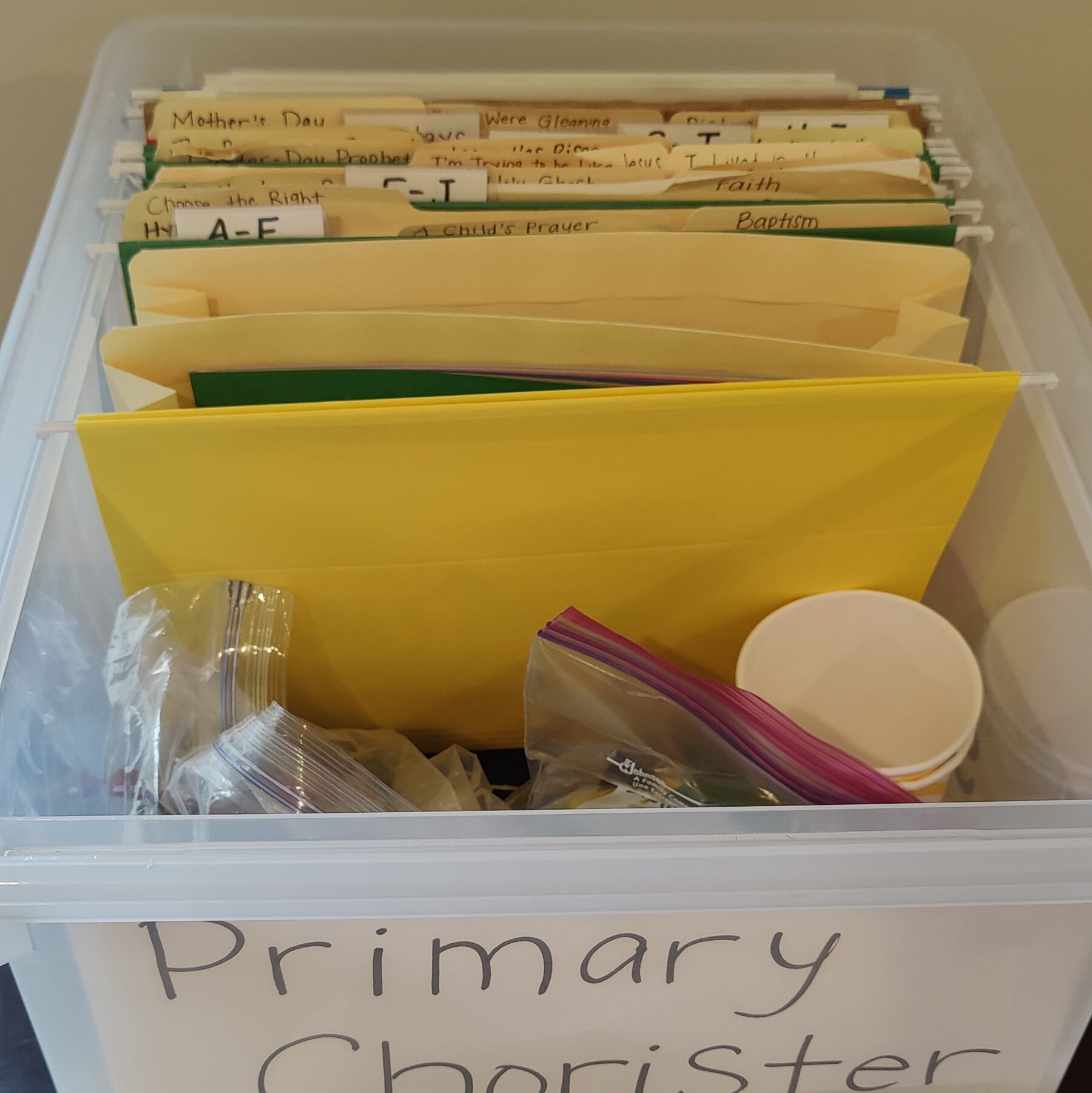
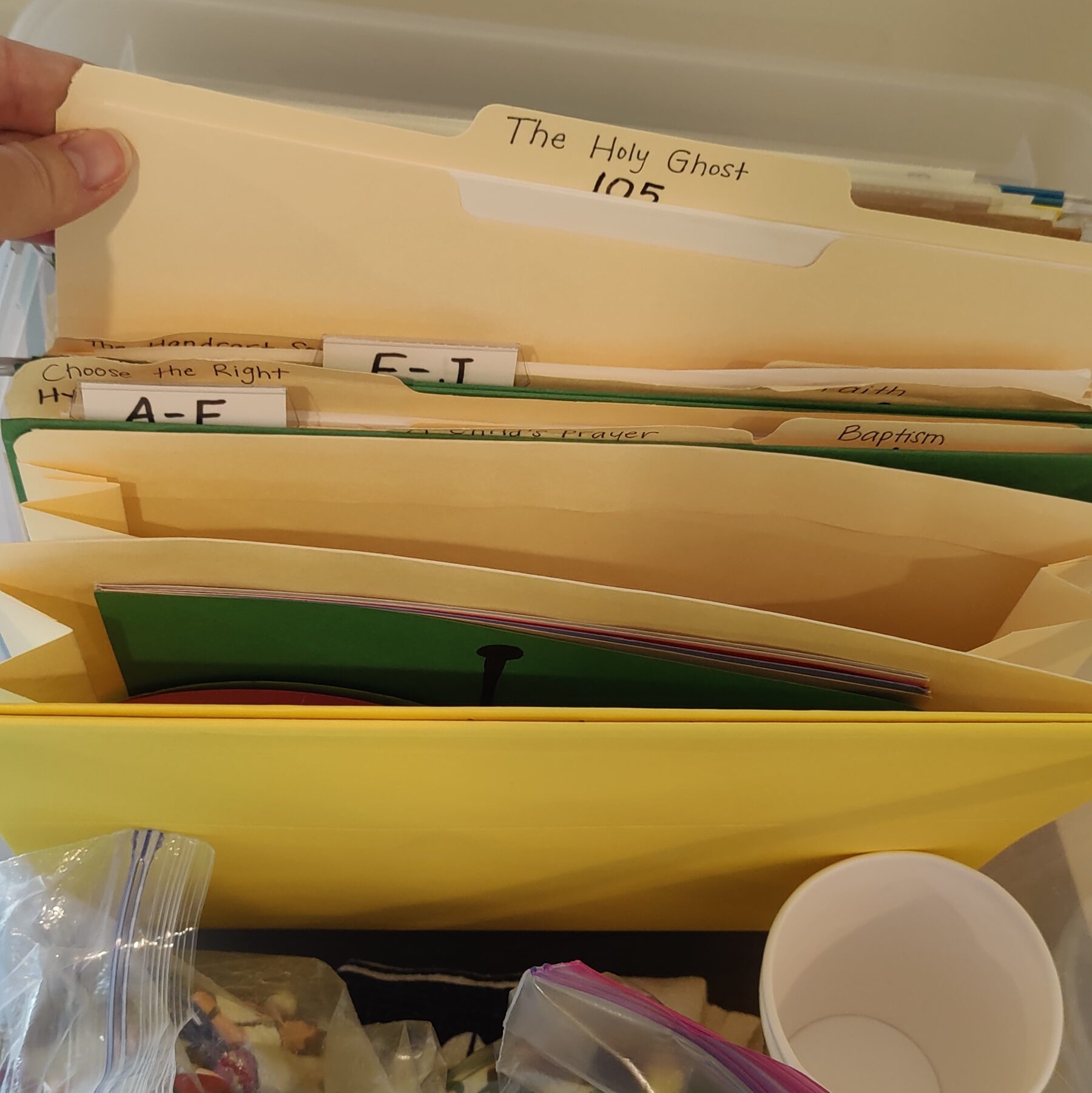
Magnets for putting things up on the board (if your Primary room has a magnetic board; if not, use masking tape).
Dry erase markers (if your Primary room has a white board; if they have a blackboard, use chalk).
A laminating machine. This isn’t a necessity, but I sure do love my laminating machine! I didn’t have my own at the time I was Chorister, but my pianist did and she was so kind to laminate my flipcharts for me. Especially for charts and papers that I used regularly, un-laminated paper just got too worn out and wrinkled too quickly. Laminated is the way to go! Since then I got my own machine and use it all the time for things around my house, even though I’m no longer the Chorister. I love my laminating machine!
Poster board. I preferred using 8.5×11 paper as much as possible because it is so much easier to store in a folder in my Primary box (and it can be laminated!). But every now and then I used a large poster board.
Index cards.
Dice for certain games.
A spinning prize wheel. This was my biggest financial investment as Primary Chorister, but it was so worth it. I used it all the time for various activities, the kids always loved it, and it was totally worth the $30 I paid for it. I got a dry-erase wheel from Amazon so I could write anything I wanted in the slots and erase it afterward. If you’re crafty and handy you can find online tutorials to make a wheel yourself, but I’m not much of a woodworker so I saved myself the headache and just bought one. My wheel’s most common uses were:
- Review Lots of Songs: write a variety of songs in the wheel slots. Call up a child to spin the wheel and sing the song it lands on. Use this to practice Program songs, learn Christmas songs in December, or to pick a wiggle song to get everyone’s wiggles out.
- Special Key Words: write common or significant words from your song onto the wheel slots. For every spin, erase or cover that word from your flipchart while you sing. Or you can replace that key word while you sing with a clap or other action instead of singing it. Continue spinning the wheel and removing more and more words.
- Wiggle Song Actions: write various actions on the wheel slots such as clapping hands, stomping feet, etc. Spin the wheel and do that action as you sing the song. This works great for songs like “Do As I’m Doing” and “Singing a Song is Fun to Do”.
Tip #6: Pick Helper Kids Fairly, and Make it Fun for Everyone!
For many Singing Time activities you’ll find that you need to pick a helper child to choose an object or take a turn in a game. Please get helpers often! I found that most often the kids loved being involved and they loved having a turn to hold a sign, spin the prize wheel, or find a hidden object from around the room. Just make sure you have a system in place for picking helpers fairly.
My Primary kept popsicle sticks with everyone’s names on them in a two-sided tin; one side was labeled “Choose” and the other was labeled “Chosen.” That made picking helpers easy; just draw a popsicle stick and put it into the opposite “Chosen” side afterwards to avoid repeats. Then you don’t have fights or kids begging and yelling to be picked.
But for some games, particularly the team games, I couldn’t use the popsicle sticks as the teams had to take turns. I found it helpful to take turns by row. First choose a helper from the first row, then the second row, and so on moving to the back of the room. Then I still got a variety of kids helping me and that still negated most of the begging and yelling. If necessary, I would ask the teachers to pick someone from their class to come be the helper, taking the burden off me completely (delegation–I love it!).
But I always followed this solid rule: No one is FORCED to help if they don’t want to. Every now and then I’d get a really reserved kid who didn’t want to help in any way, shape, or form. They just wanted to sit quietly and watch. So I always asked whoever’s name I drew, “Do you want to come up and be my helper?” and I never questioned his answer and never pushed or begged if he said no. I want everyone to be comfortable and happy in Primary, after all. Sometimes I had a few other kids try to hassle that quiet kid but I always shut them down immediately and I never allowed such talk.
I remember one particular girl (she was roughly 10) who never wanted to participate. In fact, it was months and months before I ever even heard her speak, she was that quiet. But then one Sunday, after months and months of zero participation from her, she herself came up to me after church to talk with me privately. I was pleasantly shocked that she’d actually spoken out loud to me, but I was also so impressed by her courage; it takes a lot for a shy kid to seek out an adult for a vulnerable and serious conversation like that.
She told me that she liked the songs we sing, but that she was afraid of getting a question wrong in the games. And I get that. No one wants to mess up in front of their peers. We had a good little conversation about it and I assured her that lots of kids have made mistakes or gotten answers wrong, but I never allow teasing and we all still have a good time. Either way, I assured her that I would let her participate or not as much or as little as she wanted.
And I respected that. Whenever her name came up on a popsicle stick, she always adamantly shook her head and stayed in her seat. But gradually over time she eventually agreed to participate in certain things like picking an object from around the room when she didn’t have to speak in front of everyone or answer any questions. And that was fine by me. In fact, considering how long it took her to work up to helping that way was wonderful and I was so proud of her.
She was kind of an extreme example. Like I said, I never even heard her voice for months and months. But still, sometimes kids just aren’t in the mood to participate, or even more common, sometimes the really little kids are overwhelmed or intimidated when asked to do something and they’d rather not. That’s fine too. No one has to participate if they don’t want to.
Remember, Primary is about introducing kids to Jesus Christ, and it’s hard to learn about Jesus when you’re super nervous about having to stand up in front of everyone. That’s totally understandable.
Let’s Go!
With all those tips under your belt, you are all set to be an awesome Primary Chorister. So let us all press on and sing about our Savior Jesus Christ!
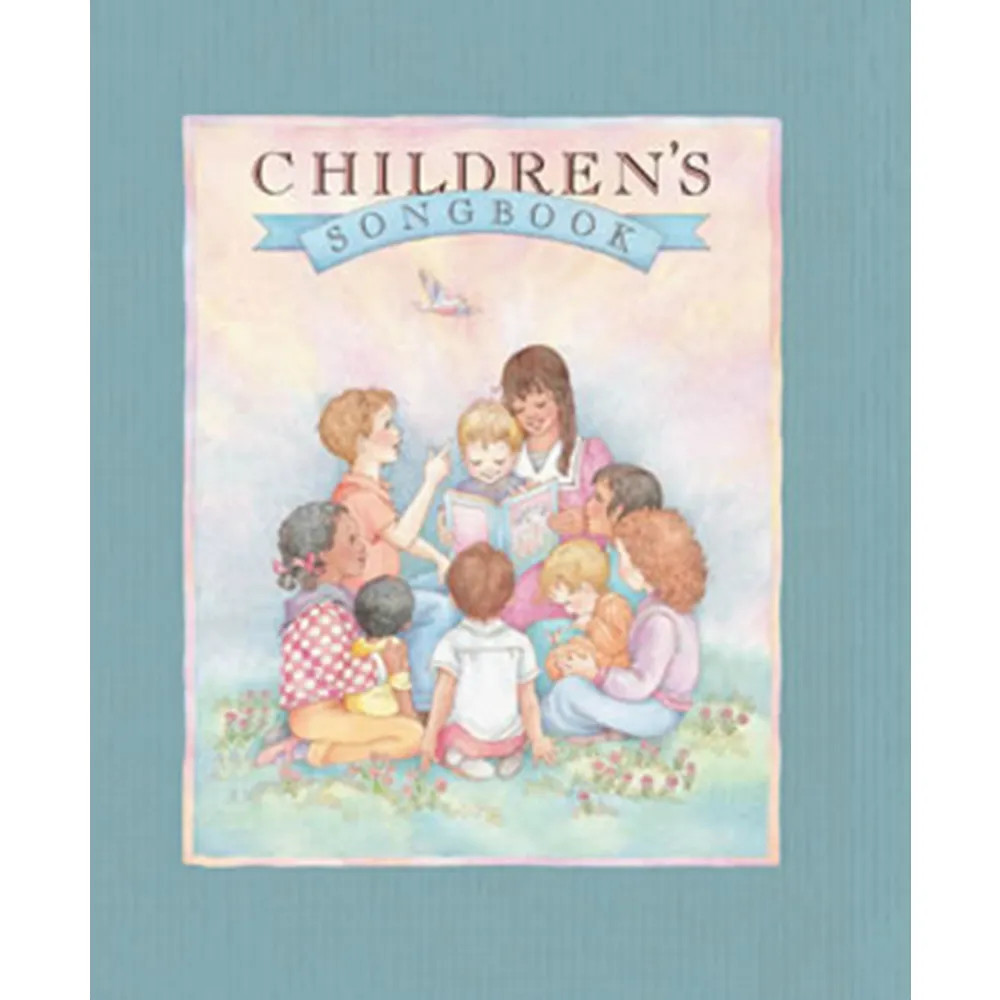
Check out the next parts of this blog series to learn about my best Singing Time activities with the following links:
Part 2: Activities to Sing Multiple Songs
